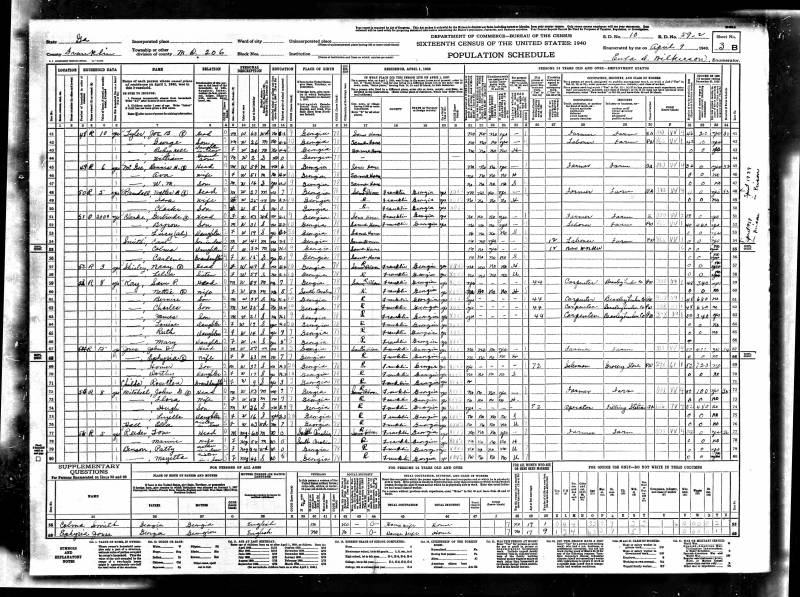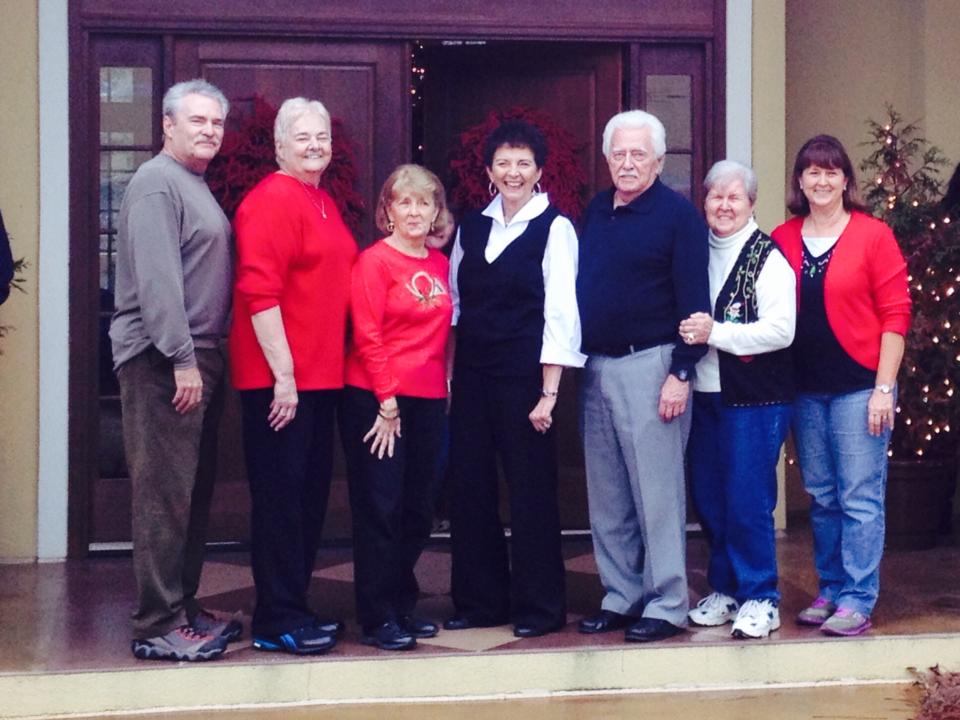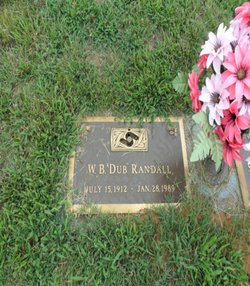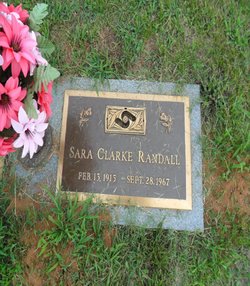Warning: Undefined array key 1 in /webroot/r/r/rrandall001/bull-randall.com/www/lib/plugins/note/syntax.php on line 103
Walter Baxter "Dub" Randall
[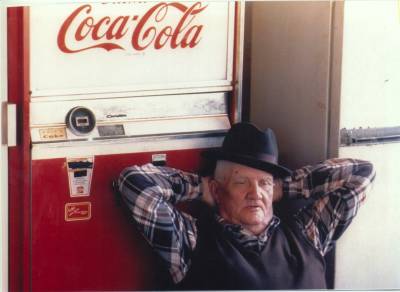 ]
Son of Henry Beaman Randall and Muriel Willene “Willie” Maret, Walter Baxter Randall, known to friends and family as “Dub”, was born in Franklin County, Georgia on July 15, 1912.
]
Son of Henry Beaman Randall and Muriel Willene “Willie” Maret, Walter Baxter Randall, known to friends and family as “Dub”, was born in Franklin County, Georgia on July 15, 1912.
According to the 1920 U.S. Census (completed by his father, Henry Beaman Randall), by the time that he was 7 years old, his family had moved to Saint Michael and Saint Phillip, Charleston, South Carolina. By 1930 (when “Dub” was 17), his family had moved back to Lavonia, GA. However, W.B. “Dub” Randall does not appear on Henry Beaman Randall's U.S. Census for that year. Instead, W.B. “Dub” Randall appears on the U.S. Census as living in Center (Oconee County), South Carolina with the family of his Uncle, William "Bill" Randall (perhaps only for the summer, as he was listed as a “Laborer” working on the farm).
Sometime around 1932, Henry Beaman Randall moved his family to Detroit, MI. “Dub” didn't like life in Detroit, so he moved back to Georgia; to live with his grandmother, Rutha Ella Farmer-Randall, in Gum Log, Georgia (his grandfather, Thomas Watson Randall, had died in 1926).
On December 31, 1933, W.B. “Dub” Randall (age 21) married Sara Ann Clarke (age 18). Sara Ann Clarke, ( his second cousin), was the daughter of William Farmer Clarke and Gertrude Randall-Farmer.
They had four children:
- Walter Clarke Randall, b. December 1, 1934
- Priscilla Ann Randall, b. January 3, 1941
- Sara Elizabeth Randall, b. August 12, 1947
- Michael Byron Randall, b. May 22, 1953
[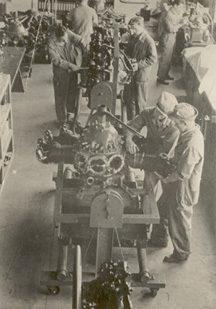 ]
During the early 1930s, with only a 7th Grade education (according to the 1940 Federal Census), Walter Baxter “Dub” Randall lived in the town of Lavonia, Georgia – where he made his living (with many family members) as a “bootlegger”. While the circumstances are unclear, “Dub” was convicted for some crime and spent one year in the federal “reformatory” located near Chillicothe, Ohio. Built in 1925, Chillicothe, Ohio was the site of the first federal reformatory, designed for younger offenders between the ages of seventeen and thirty.
]
During the early 1930s, with only a 7th Grade education (according to the 1940 Federal Census), Walter Baxter “Dub” Randall lived in the town of Lavonia, Georgia – where he made his living (with many family members) as a “bootlegger”. While the circumstances are unclear, “Dub” was convicted for some crime and spent one year in the federal “reformatory” located near Chillicothe, Ohio. Built in 1925, Chillicothe, Ohio was the site of the first federal reformatory, designed for younger offenders between the ages of seventeen and thirty.
According to his children (Clarke & Priscilla) during the late 1930's, when police stopped a car that Bill and “Dub” Randall were in, they found counterfeit $20 bills (belonging to Bill Randall). Because Bill had several children, and “Dub” only had one son at that time, he agreed to claim the counterfeit money as his. “Dub” Randall agreed to plea guilty for a crime that his uncle, Bill Randall, had committed. After “Dub” Randall served one year in the federal reformatory located near Chillicothe, Ohio, Bill Randall hired him to sell used cars in Seneca, SC.
In yet another explanation, according to Margaret Ayers (Walter Clarke Randall's 1st cousin), “Dub” was convicted of selling “black market” automobile tires (which is unlikely as this event took place prior to WW II, when tires were being rationed).
“Dub”s daughter, Priscilla has a beaded purse that “Dub” made while in the reformatory. And his daughter Sara Elizabeth has a metal fruit bowl and two candle sticks that “Dub” made (presumably in the machinery shop) while in the reformatory. And his son, Walter Clarke Randall, recalled a trip to Chillicothe, Ohio with his mother (Sara) to visit “Dub”.
Upon his release, “Dub” re-joined his wife and son in Franklin, County, Georgia. “Dub” then built a house in a rural area known as “Gum Log” (at 93 Coach Road, Lavonia, GA - near Hwy. 59) across the street (a dirt road at that time) from his mother-in-law, Gertrude Randall Clarke (known to family as “Mama Clarke”). While the house had a pre-built bathroom, there was a brief period of time before a water line was constructed from Gertrude Randall Clarke's house to “Dubs” house. During this time, the family used an “Outhouse” (built behind the house… where the Sears Roebuck Catalog was used as toilet paper); and baths were taken every Saturday (weekly) in the kitchen (where water could be brought from the well and heated) using a large foot tub.
Once water line was run to “Dub's” house, it was connected to the kitchen sink and a toilet. The “bathroom” still didn't have a sink or bathtub because the house still didn't have a hot water heater. So the family would typically walk across the street to Gertrude Randall Clarke's house to bath (unless the children were bathed in the kitchen using a large foot tub). Gertrude Randall Clarke's house had a hot water heater that was connected to her stove, so hot (or at least warm) baths could be taken there. With the new toilet installed, in order to protect the pipes and the toilet, this meant that the Sears & Roebuck catalog had to be replaced with toilet paper from a store.
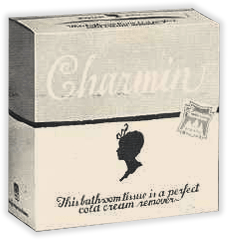
During the 1930's people were embarrassed to buy toilet paper, so the largest manufacturer, Hoberg Paper & Fibre Co., marketed their “Charmin” brand toilet paper as “bathroom tissue” with the silhouette of a woman's head and the tag line, “This bathroom tissue is a perfect cold cream remover”. The genius of the campaign was that the company could avoid talking about toilet paper's actual purpose. Charmin was enormously successful, and the tactic helped the brand survive the Great Depression. It also helped that, in 1932, Charmin began marketing economy-size packs of four rolls (shown above).1)2)
[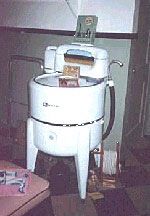 ]
The house initially had a wood burning stove in kitchen (for cooking) - and a coal burning stove in the “living room” (for heat). One of Walter Clarke Randall's chores was to gather kindling for the heat stove - as well as soak corn cobs in kerosene to help Sara start the coal in the morning. Later, “Dub” bought a kerosene stove for cooking, but Sara didn't like it because everything she cooked smelled like kerosene! Once electricity was run the house (220 Volt), “Dub” replaced the kerosene stove with an electric stove. After moving into the house in “Gum Log”, Sara would wash clothes outside of Gertrude Randall Clarke's house using a large pot with a fire built under it. Once electricity was run to the houses, “Dub” bought an electric clothes washer which sat on Gertrude Randall Clarke's porch. The clothes were then hung on a clothes line to air-dry. While “Dub” later bought an “in-door” clothes drier, Sara didn't want a clothes drier because she preferred to air-dry clothes (on a clothes line)… unless it was raining (regardless of the outside temperature).
]
The house initially had a wood burning stove in kitchen (for cooking) - and a coal burning stove in the “living room” (for heat). One of Walter Clarke Randall's chores was to gather kindling for the heat stove - as well as soak corn cobs in kerosene to help Sara start the coal in the morning. Later, “Dub” bought a kerosene stove for cooking, but Sara didn't like it because everything she cooked smelled like kerosene! Once electricity was run the house (220 Volt), “Dub” replaced the kerosene stove with an electric stove. After moving into the house in “Gum Log”, Sara would wash clothes outside of Gertrude Randall Clarke's house using a large pot with a fire built under it. Once electricity was run to the houses, “Dub” bought an electric clothes washer which sat on Gertrude Randall Clarke's porch. The clothes were then hung on a clothes line to air-dry. While “Dub” later bought an “in-door” clothes drier, Sara didn't want a clothes drier because she preferred to air-dry clothes (on a clothes line)… unless it was raining (regardless of the outside temperature).
[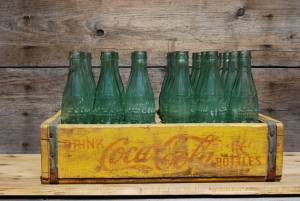 ]
Sara Clarke Randall enjoyed drinking Coca-Cola so much, that Dub had cases of Coca-Cola delivered to the house!
]
Sara Clarke Randall enjoyed drinking Coca-Cola so much, that Dub had cases of Coca-Cola delivered to the house!
According to his children, on Christmas Eve the kids left empty cardboard boxes in lieu of stockings. And on Christmas morning, “Dub” insisted that the children stay out of the Den until their Uncle Byron arrived (approx. 5:00-5:30am). The kids would then find their boxes filled with fruits, nuts, candies and fireworks (e.g. Sparklers, Fire Crackers, Roman Candles, Bottle Rockets). Every Christmas morning, “Dub” insisted upon eating quail for breakfast. And NO children were allowed to enter the den (where the Christmas presents had arrived), until their Uncle Byron Hudson Clarke had arrived.
During this time the family typically kept a total of 15 cattle; two of which were “milk” cows, and churned their own butter. The family “sold” the butter to a local grocery store where the amount was recorded on a “Due Bill”. This allowed the family to buy groceries as a “debit” against the “Due Bill” rather than exchange cash. The family also kept a couple of hogs (down by the the “branch” / spring). Along with pork, “Dub” enjoyed eating scrambled eggs mixed with scrambled hog brains. He would also eat mixture of ground-up hog tongue, ears & nose; which was pressed together and called “head meat”. Among the crops the family grew were cotton, corn, and wheat / oats. During September, the family would help pick cotton (by hand) - and usually contracted black folks to help. Once they had a wagon load, W.B. "Dub" Randall would take the cotton to a cotton gin (to sell) or to a warehouse (near the cotton gin) to store until the price went up (which it usually did by December).
In addition, Sara Randall kept a 1 acre garden, where she grew butter-beans, pinto beans, black-eyed peas and assorted vegetables. As the crops came in, she would “can” several vegetables and dry the beans and peas (for winter). While many people in the U.S. had to rely on rationed food during WW II, W.B. Randall's family ate well due to growing their own food.
Early refrigerators were expensive and unreliable. In the mid-1920s, there were frequent reports of families dying from leaks of toxic fumes from refrigerants of the time. Throughout the '30s, neither “Dub” nor Gertrude Randall Clarke owned a refrigerator. However, in order to keep food cold, Gertrude Randall Clarke had a Spring House (a small building either built over a spring or with a spring spouting water from the ground) built beside her house - to keep food cold. Of course, “Dub” Randall's family used Gertrude Randall Clarke's “Spring House”. In addition, “Dub” Randall's family kept milk cool by lowering a sealed half gallon glass jar into the water well (located about 20 feet from the back porch) - and pulling it up when they wanted some (there were two ropes leading into the well… one with a bucket for water, and the other for lowering milk into the well to keep it cool). A favorite “quick” meal for the Randall family was to crumble cornbread into a glass, pour cold milk into the glass, sprinkle black pepper over it, and then eat the cornbread with a spoon… with an onion on the side. “Dub” refused to eat “left-over” corn bread, so the corn bread was cooked fresh (when cooked in a skillet, this was called a “pone” of corn bread) every time it was eaten. Another family favorite was to mix black-eyed peas with crumbled corn bread and pour the juice from pickled peaches over it (later the pickled peach juice were replaced with green tomato pickle juice). “After WW II, a freezer locker was built in near-by Lavonia, GA (by the school). So the family began periodically slaughtering steers for meat. The meat was then taken to the local freezer locker, where it was stored until the family needed it.
[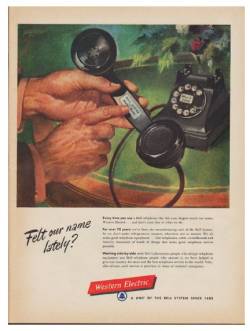 ]
During the 1940s, for entertainment, the family would often visit Aunt Sara Sophia Felton Randall-Maret (Aunt Sophie) and her husband, Karl Eugene Maret (at least once each week), where the adults would play cards (i.e., “Pinochle”, and later “Canasta”) while the children all played. This remained a family tradition… until television became popular. At home, W.B. "Dub" Randall had an “upright” radio in the living room where the family would gather. This was particularly popular during the winter, as this was where the coal burning heater was located. Because there was no other heat in the house, the temperature in bedroom was practically the same as it was outdoors. During the winter the family would warm bricks on the coal burning heater, then wrap them in towels and place them in their beds (under the quilts at the foot of the bed) for warmth. The beds were covered with several quilts. In fact, Sara Clarke Randall made quilts for many years.
]
During the 1940s, for entertainment, the family would often visit Aunt Sara Sophia Felton Randall-Maret (Aunt Sophie) and her husband, Karl Eugene Maret (at least once each week), where the adults would play cards (i.e., “Pinochle”, and later “Canasta”) while the children all played. This remained a family tradition… until television became popular. At home, W.B. "Dub" Randall had an “upright” radio in the living room where the family would gather. This was particularly popular during the winter, as this was where the coal burning heater was located. Because there was no other heat in the house, the temperature in bedroom was practically the same as it was outdoors. During the winter the family would warm bricks on the coal burning heater, then wrap them in towels and place them in their beds (under the quilts at the foot of the bed) for warmth. The beds were covered with several quilts. In fact, Sara Clarke Randall made quilts for many years.
During the late 1940s, “Dub” was “moonshining” with Chester York (future Sheriff of Rabin County), Milt English & Ham Thompson. Milt English was making “moonshine” at his farm (on a mountain), located in Persimmon (not a town, but a populated place located in Rabun County, Georgia at latitude 34.896 and longitude -83.512.). Milt had a mule trained to transport moonshine down the mountain to his farmhouse, where his wife would unload the mule, and then send it back up the mountain with sugar and corn (for making the moonshine) the retrieve more moonshine. Byron Clarke was delivering the “moonshine” where a removed backseat (probably to Franklin County).
The “revenuers” waited for the mule, then followed the mule back up the mountain to the “moonshine still”. Milt English was prosecuted and did time in prison for “moonshining”.
Shortly after moving across the road from Gertrude Randall Clarke, “Dub” purchased her farm (allowing her to sell her home and move to Lavonia, Georgia). “Dub” also started a Mule Trading business (which also included buying and selling some cattle). During this time, many farmers could not afford tractors… and some actually preferred mules instead of tractors (incorrectly believing that the weight of the tractors “packed” and hardened the farm soil).
In about 1953, “Dub” sold the farm and used the money to purchase a Ford car dealership in Winder, GA (approx. 1 hour south or Lavonia, GA via I-85). “Dub” commuted for several months and then moved his family to Winder, GA. It was at this house in Winder, GA that the family had their first telephone. After owning the dealership for just over a year, he sold it in (about) 1954/1955 and moved his family back to Lavonia, GA, where he purchased a “Service Station” with his brother-in-law, Byron Hudson Clarke. Shortly after returning to Lavonia, he built a house on Rainbow Drive.
Like the majority of people in the South at that time, politically “Dub” was a life-long Democrat. However, the Democratic Party was far more conservative during the early to mid 20th century than it is today. The Democratic party became increasingly socialist during the late 20th century… as the Republican Party became more conservative. This “switch” prompted many Georgians to switch to the Republican Party. By the early 21st century, the majority of Georgians had switched to the Republican Party… electing their first Republican State Governor in 2002.
Known to the grandchildren as “Mama Sara”, Sara Randall, while having a Hysterectomy during the Fall of 1961 (at age 46), it was discovered that Sara Randall had cancer of the uterus, cervix, and ovaries. These organs were all removed during that surgery. However, shortly thereafter, she was diagnosed with colon cancer. After undergoing surgery along with radiation treatment, she died from the cancer on Sept. 28, 1967 (at age 52). She is buried in Franklin Memorial Gardens-North, Lavonia (Franklin County), Georgia (Ref.: Find A Grave Memorial# 94333797).3)
Prior to her death, she had urged her best friend and neighbor, the widow Viola Browning-Howell (V.O.), to take care of “Dub” after she was gone. V.O. Browning had been married to Robert “Bob” Carrol Howell (1909-1955), who had died during June 1955 (Ref.: Find A Grave Memorial# 22454853).4) Viola Browning-Howell (V.O.) was the daughter of James W. Browning (1879-1954)5) and Mattie M.J. Andrews (1886-1972)6).
After Sara died, “Dub” courted and married “V.O.” during June, 1968, at Lavonia First Baptist Church. To the grandchildren she quickly became known as “Mama V.O.”.
Born with a heart defect, Walter Baxter “Dub” Randall died on January 28, 1989 (at age 76). He is buried in Franklin Memorial Gardens-North, Lavonia (Franklin County), Georgia (Ref.: Find A Grave Memorial# 94333673).7)
On June 6, 2005, Viola “V.O.” Browning Randall (age 88) died at Northeast Georgia Medical Center in Gainesville, GA. Her grandsons, Richard Clarke Randall and Walter Mark Randall were among the pall bearers.
Obituary
Lavonia - Viola “V.O.” Browning Randall, 88, of Georgia Hwy 59, Lavonia, GA died Monday, June 6, 2005 at Northeast Georgia Medical Center in Gainesville. Services will be held at 2 p.m. Wednesday from the Lavonia First Baptist Church. Burial will follow in Franklin Memorial Gardens North. Survivors include daughters, Bobbie McCormack, Patsy Roberts and Jimmie Lowery, both of Lavonia; sister, Sarah Norton, Lavonia; fifteen grandchildren; fifteen great-grandchildren; one great-great-grandchild; one nephew. Hamby Funeral Home, Lavonia, is in charge of arrangements.
Published in the “Athens Banner-Herald” (newspaper) on June 8, 2005.
Lineage
| Name | Line Manager | Job Title | Photo |
|---|---|---|---|
| Walter Baxter “Dub” Randall | (1912-1989) | ||
| Henry Beaman Randall | Walter Baxter “Dub” Randall | Father (1891-1949) | |
| Muriel Willene “Willie” Maret | Walter Baxter “Dub” Randall | Mother (1891-1979) | |
| Thomas Watson Randall | Henry Beaman Randall | Grand Father (1863-1926) | |
| Rutha Ella Farmer | Henry Beaman Randall | Grand Mother (1868-1938) | |
| Joseph William Maret | Muriel Willene “Willie” Maret | Grand Father | |
| Adelia Walters | Muriel Willene “Willie” Maret | Grand Mother | |
| Anderson Smith Randal | Thomas Watson Randall | Great Grand Father (1833-1875) | |
| Sophia Mitchell | Thomas Watson Randall | Great Grand Mother (1834-1900) | |
| Joseph Maret | Joseph William Maret | Great Grand Father | |
| Sarah Ann Holland | Joseph William Maret | Great Grand Mother | |
| Wiley Mitchell | Sophia Mitchell | Great, Great Grand Father | |
| Martha Daniel | Sophia Mitchell | Great, Great Grand Mother | |
| Aaron Daniel | Martha Daniel | Great, Great, Great Grand Father | |
| Barsheba Beck | Martha Daniel | Great, Great, Great Grand Mother | |
| William W. Mitchell | Wiley Mitchell | Great, Great, Great Grand Father | |
| Catherine Moulder | Wiley Mitchell | Great, Great, Great Grand Mother | |
| Caleb Beck | Barsheba Beck | Great, Great, Great, Great Grand Father | |
| Hannah Kennard | Barsheba Beck | Great, Great, Great, Great Grand Mother | |
| Robert Holland | Sarah Ann Holland | Great, Great, Grand Father | |
| Sarah Jones | Sarah Ann Holland | Great, Great, Grand Mother | |
| Oney Cypress Randal | Anderson Smith Randal | Great, Great, Grand Father (1796-1854) | |
| Susannah W. Wilkins | Anderson Smith Randal | Great, Great, Grand Mother (1800-1874) | |
| John Bull | Oney Cypress Randal | Great, Great, Great Grand Father | |
| Hanna Harvey | Oney Cypress Randal | Great, Great, Great Grand Mother | |
| Jacob Holland | Robert Holland | Great, Great, Great, Grand Father | |
| Mary Polly Harrison | Robert Holland | Great, Great, Great, Grand Mother | |
| Thomas Bull Jr. | John Bull | Great, Great, Great, Great Grand Father | |
| Sarah Randal | John Bull | Great, Great, Great, Great Grand Mother | |
| Col. Thomas Peyton Harvey, Sr. | Hanna Harvey | Great, Great, Great, Great Grand Father | |
| Sarahann Williams | Hanna Harvey | Great, Great, Great, Great Grand Mother | |
| Thomas Harrison (1730-1809) | Mary Polly Harrison | Great, Great, Great, Great Grand Father | |
| Catherine Earle | Mary Polly Harrison | Great, Great, Great, Great Grand Mother | |
| Thomas Bull, Sr. | Thomas Bull Jr. | Great, Great, Great, Great, Great Grand Father | |
| Susanna Harwell | Thomas Bull Jr. | Great, Great, Great, Great, Great Grand Mother | |
| John Harrison | Thomas Harrison (1730-1809) | Great, Great, Great, Great, Great Grand Father | |
| Sarah Patsy Daniel | Thomas Harrison (1730-1809) | Great, Great, Great, Great, Great Grand Mother | |
| Ambrose Harwell | Susanna Harwell | Great, Great, Great, Great, Great, Great Grand Father | |
| Elizabeth Browne | Susanna Harwell | Great, Great, Great, Great, Great, Great Grand Mother | |
| Thomas Harrison (1665-1716) | John Harrison | Great, Great, Great, Great, Great, Great Grand Father |
Source: Descendants of Thomas Harrison
